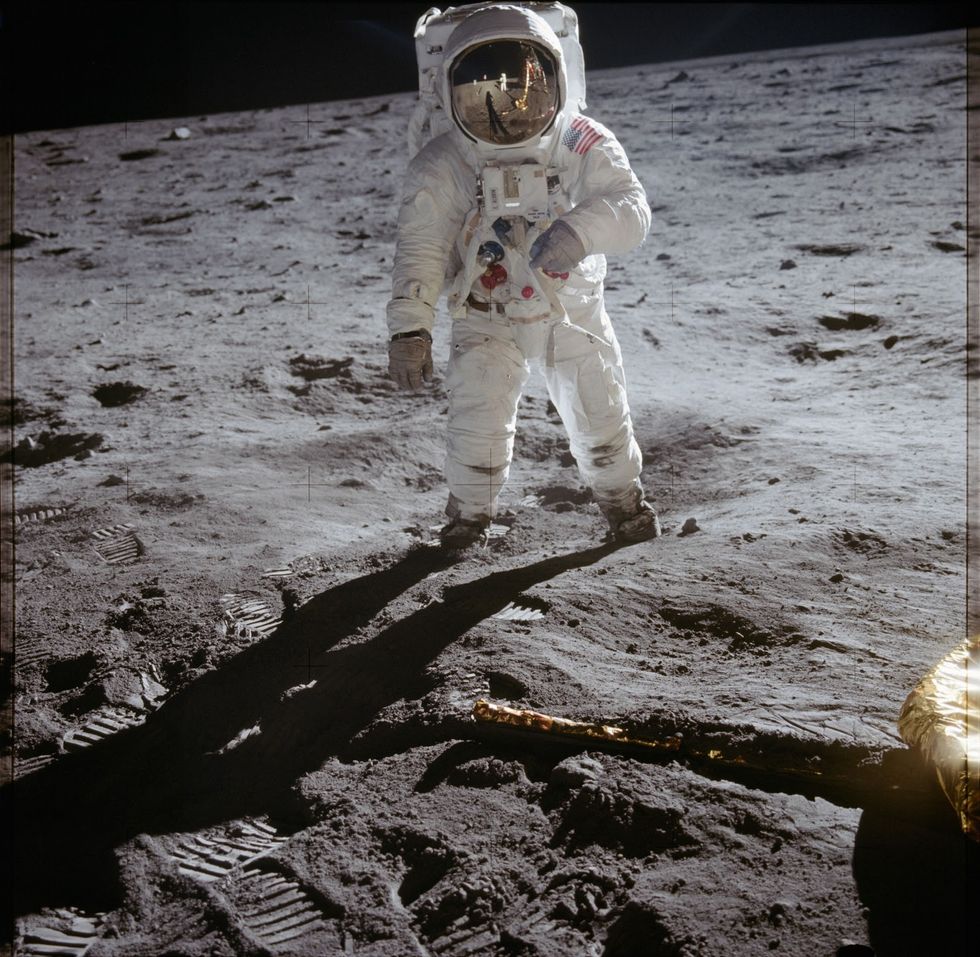Download the Photos From the Moon Landing (and Learn About the Camera)
One small step for man, one giant leap forward for camera technology.

Everyone knows about the moon landing. (Yes, it happened. No, Stanley Kubrick didn’t direct a fake video.) Today, we’re going to take a look back and celebrate the 50 year anniversary of one of America’s crowning cultural achievements -- and showcase the camera that recorded the whole thing.
The Swedish company responsible for providing those cameras is called Hasselblad. Let’s take a look at some sweet moon shots, as well as the camera itself.
Friends From the Start
The Hasselblad/NASA relationship started seven years before the Apollo mission. The Mission Pilot, Walter “Wally” Schirra, had already been using Hasselblad cameras for his own personal photography studies. He suggested to NASA that a modified version of the camera could be successfully used in space to capture images of the Earth -- and he was right. In 1962, Hasselblad’s camera snapped pictures of Schirra’s six Earth orbits.
Lean and Mean
The partnership between Hasselblad and NASA only deepened with time. Hasselblad modified and refined its cameras to make them even more suitable for space use, experimenting with different constructions and lenses.
But because of the strict weight limit that rocket cargo must adhere to, the Hasselblad onboard cameras were forced to be as lightweight and lean as possible. The cameras also had to work perfectly under the most intense conditions: more than 120° C in the sun, and less than 65° C in the shade. Fortunately, they were up to the task.
Keep It Rolling
In 1965, Hasselblad cameras managed to capture the first spacewalk ever performed. Astronaut James A. McDivitt used a Hasselblad camera to take a series of pictures of his spacewalking colleague, Edward H. White.
The Main Event
On July 20th, 1969, the Apollo 11 mission successfully landed the Eagle on the Moon. In order to accurately capture what he saw on the lunar surface, astronaut Neil Armstrong attached a Hasselblad camera to his chest.
That camera was a silver Hasselblad Data Camera (HDC) with Réseau plate, fitted with a Zeiss Biogon 60mm ƒ/5.6 lens. (It was painted silver as a way to stabilize the camera when moving between temperatures ranging from -85° F to over 248° F). A second black Hasselblad Electric Camera (HEC) with a Zeiss Planar 80mm ƒ/2,8 lens was used to shoot from inside the Eagle lunar module.
And if you ever find yourself on the moon (looking at you, Bezos), you might stumble upon something familiar...
A Hasselblad camera.
When Apollo 11 was ready to leave, they knew that the cameras they were using still weighed too much for their re-entry craft. They left the bodies of the cameras behind and only brought home the film. As of right now, there are 12 Hasselblad cameras up there, covered in lunar dust.
Half-Century of Hasselblad
As we near the 50 year anniversary of this momentous occasion, let’s take a moment to appreciate what every director, cinematographer, and Vegas vacationer already knows: pics or it didn’t happen.
The technological advances from humanity’s trip to the moon still reverberate today, and Hasselblad is a perfect example. As a result of the demands placed on their cameras, Hasseblad has innovated and developed new products. You can check them out on Hasselblad’s website.
Looking for more on the moon landing? Check out this awesome video.















